Electric bikes have moved from novelty to mainstream, and for good reason. They’re faster than walking, cheaper than cars, and less sweaty than a regular bike if you use pedal assist. In 2025, city planners, commuters, and employers are leaning hard into eBikes because these machines solve the “last mile” problem, reduce commute times, and cut emissions. Whether you're trying to shave minutes off your commute, avoid crowded public transport, or save a bundle on gas and parking, an eBike is a practical move.
Right up front: if you’re hunting for the Top 10 eBikes for Commuters in 2025, this guide gives you the features to look for, side-by-side comparisons, and real product picks so you can decide fast and confidently.
What Makes a Great Commuter eBike?
Choosing the right commuter eBike isn’t about brand alone — it's about balance. Below are the core attributes that separate “meh” from “must-buy.”
Battery Life & Range
Range matters. If you’ve got a 10–20 mile round trip with hills, you’ll want a battery rated for 40–70+ miles under mixed assist levels. Bigger battery = heavier bike, so think about what you can lift or charge regularly.
Motor Power & Speed
Commuter motors typically range from 250W to 750W nominal, with torque and controller tuning influencing real-world acceleration. For city commuting, a well-tuned 250–500W motor is usually more than enough; powerful 750W hub motors are popular for heavier loads or steep terrain. For example, many mid- to high-tier commuter models from mainstream brands use motors and controllers optimized for steady city speeds and dependable hill-climbing.
Comfort & Ergonomics
You’ll be on this bike daily. Look for adjustable handlebars, ergonomic saddles, front suspension or fork comfort, and a frame geometry that keeps stress off your back. Integrated lights, fenders, and racks make commuting practical in real weather.
Portability & Folding Options
If your commute includes trains or you have limited storage, folding eBikes like the Lectric XP series are winners. They make mixed-mode commutes easy and save space at home or at work.
Safety Features
Hydraulic disc brakes, integrated lighting, reflective tires, and a reliable frame are non-negotiable. Some modern eBikes include smart features like GPS tracking, alarms, and firmware updates for safety and theft prevention.
Benefits of Commuting with an eBike
Cost Savings Compared to Cars
You’ll cut fuel, parking, and toll expenses. Maintenance on an eBike is small compared to a car — typically chain, brakes, and occasional battery servicing.
Environmental Impact
eBikes produce a fraction of the carbon footprint of cars, especially for short trips. The carbon cost to manufacture an eBike is far lower than that of an automobile.
Time Efficiency
On congested urban routes, eBikes often beat cars and transit door-to-door. They’re ideal for flexible routing and short detours — you’ll be surprised how often they shave off minutes.
Top 10 eBikes for Commuters in 2025
Below are ten commuter-focused eBikes that stand out in 2025 for practicality, performance, and value. Each model listing highlights why it’s a top commuter pick and calls out the key specs you should care about.
1.VICTRIP R6 Pro: The Premium Upgrade
The R6 Pro takes everything riders love about the R6 and pushes it further. With a higher-capacity battery for extended range, a more powerful motor for steeper climbs, and enhanced comfort features (like upgraded suspension and ergonomic design), it’s built for commuters with longer daily rides or mixed urban–suburban terrain. The R6 Pro is perfect if you need a rugged, reliable eBike that won’t compromise on range or performance. For professionals who want the same dependability as the R6 but with extra “juice” and refinement, the Pro is the smarter pick.
TOP PICK
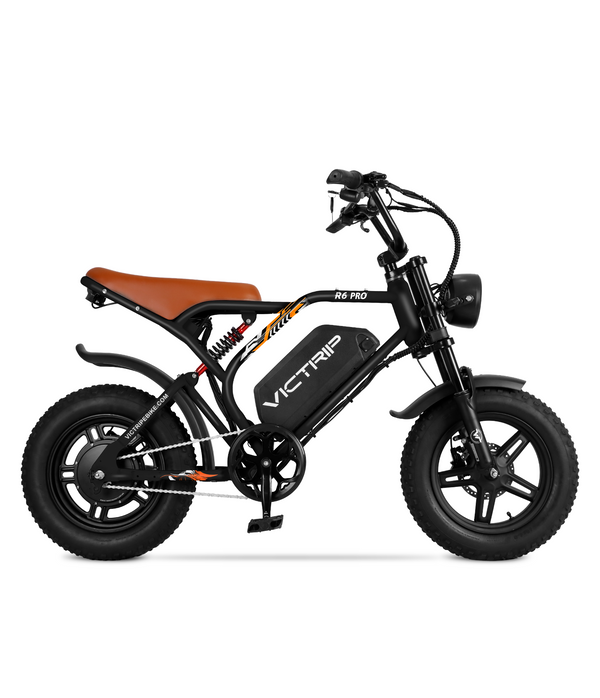
VICTRIP®R6 Pro 1500W Moped Style EBike
2. Rad Power RadCity 5 Plus
Rad Power’s RadCity 5 Plus is a commuter classic — roomy geometry, a substantial battery (around 672 Wh in recent models), and a hub motor tuned for urban use. It’s comfy, reliable, and has a large payload capacity for hauling bags or groceries. If you want a no-nonsense daily rider that’s easy to service, this is a strong pick.
3. VICTRIP TITAN S: long range electric bike
The VICTRIP TITAN S is marketed as a versatile, long rang eBike with sturdy build quality, puncture-resistant tires, and strong lighting — good for commuters who also like weekend adventures. It emphasizes ruggedness and long-lasting components while offering practical commuter features like integrated lights and puncture-resistant tires.

4. Aventon Level.2
Aventon’s Level series has been a commuter favorite for offering a balanced spec sheet at a fair price point — comfortable geometry, solid battery range, and commuter-friendly accessories like racks and fenders. The Level.2 keeps what commuters love: dependable range, user-friendly controls, and approachable price.
5. Specialized Turbo Vado 5.0
Specialized’s Turbo line aims for comfort and sporty performance. The Vado 5.0 blends a smooth pedal-assist system with a commuter-ready frame, integrated lights, and a capable motor for daily trips in mixed terrain. This is for riders who want polished ride feel and strong dealer support.
6. Cannondale Tesoro Neo X
Cannondale’s Tesoro Neo X mixes durability and commuting practicality, often with a comfortable geometry for long daily rides and integrated accessories. It’s built to handle heavy loads and longer commutes while remaining stable and predictable.
7. Ride1Up Prodigy
Ride1Up continues to deliver value-packed eBikes. The Prodigy is a solid commuter with competent motor, decent battery life, and a price that undercuts premium competitors — a great option if you want bang for your buck.
8. Lectric XP 3.0 (Folding)
Lectric’s XP line is king of budget folding eBikes. The XP 3.0 is portable, compact, and ideal for riders who need to carry their bike on transit or into small apartments. Folding convenience + respectable range = commuter freedom.
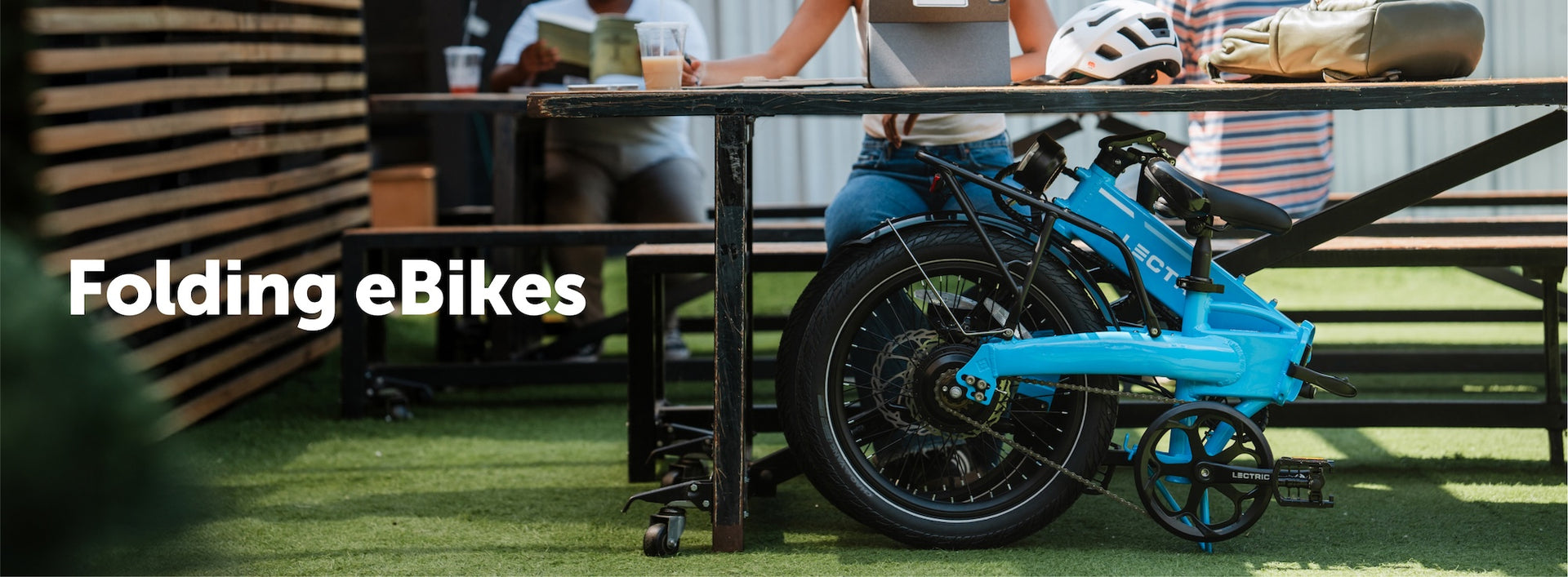
9. Gazelle Ultimate C380+
Gazelle’s Ultimate C380+ is a high-end commuter with smooth Bosch support, integrated lights, and premium finishing. It’s an excellent choice for rainy climates and riders who want tactile comfort and strong componentry.
10. Giant FastRoad E+ EX Pro
Giant’s FastRoad E+ series bridges fitness and commuting, packing quick acceleration, efficient motors, and road-bike-inspired handling. If speed on paved roads is your priority, this model balances fitness ride dynamics with commuter practicality.
Notes: Model specs can differ by region and trim level. For the most current specs, check manufacturer pages and updated 2025 reviews. Examples: VICTRIP product pages and Rad Power specs.
Comparison Table: Top 10 Commuter eBikes of 2025
| Bike | Typical Motor | Battery (Wh) | Top Speed (assist) | Notable Strength |
|---|---|---|---|---|
| VICTRIP R6 Pro | 1500W Hub Motor | 1200Wh | 35 mph | Rugged, puncture-resistant tires. |
| RadCity 5 Plus | 250–750W hub | 672 Wh | 20–28 mph | Payload, value, widely available. |
| VICTRIP TITAN S | 1000W Hub motor | 2880 Wh | 30 mph | Premium range & speed. |
| Aventon Level.2 | Hub motor | ~500–720 | 20–28 mph | Value + commuter features |
| Specialized Turbo Vado 5.0 | Specialized / mid-drive | ~500–700 | 20–28 mph | Dealer network & refined ride |
| Cannondale Tesoro Neo X | Mid-drive | ~500–700 | 20–28 mph | Comfort & stability |
| Ride1Up Prodigy | Hub motor | ~400–700 | 20–28 mph | Strong value proposition |
| Lectric XP 3.0 | Hub motor (folding) | ~360–540 | 20–28 mph | Folding & portability. |
| Gazelle Ultimate C380+ | Bosch mid-drive | ~500–625 | 20–28 mph | Premium commuting comfort |
| Giant FastRoad E+ EX Pro | Yamaha/Bosch/Proprietary | ~400–625 | 20–28 mph | Fast on paved roads |
(Use this table as a quick snapshot — verify trim-specific numbers on manufacturer sites before purchase.)
How to Choose the Right eBike for Your Commute
Short vs. Long Distance Riders
For short city hops (under 10 miles), prioritize portability and nimble handling — folding or lighter commuters work well. For longer commutes (15+ miles), focus on battery capacity, efficient motors, and comfort features like suspension or ergonomic saddles.
Read More: Top Long Range Electric Bikes in 2025 (150+ Mile Range).
Urban vs. Suburban Commuters
Urban riders often need compact frames, reliable lights, and puncture protection. Suburban commuters may face hills and longer stretches — choose higher-torque motors and larger batteries.
Budget Considerations
Expect to spend:
-
Budget: $800–$1,500 (folding, entry-level commuter)
-
Mid-range: $1,500–$3,000 (best value-to-performance)
-
Premium: $3,000+ (high-end motors, carbon/quality components)
If you’re buying for business use, check employer subsidies, tax incentives, or local eBike rebate programs that can lower initial cost. (Local programs vary widely by city and country.)
Conclusion: The Future of Commuting with eBikes in 2025
Commuting in 2025 increasingly means riding with intent — less congestion, lower costs, and healthier routines. The Top 10 eBikes for Commuters in 2025 listed here cover a range of priorities: portability, affordability, premium performance, and daily durability. Pick the bike that matches your distance, terrain, and storage needs, and remember: the best eBike is the one you’ll ride every day.
If you want, I can:
-
Narrow this list to bikes under a specific budget;
-
Create a side-by-side spec sheet for two or three finalists; or
-
Find local dealers and demo ride locations near you.
FAQs
Are eBikes legal on the road?
Generally yes — most countries have classifications and speed limits for eBikes. Many regions limit eBike assist to 20–28 mph depending on class. Always check local regulations to confirm whether your chosen model requires registration or helmet laws.
How far can an eBike go on a single charge?
Depends on battery size, assist level, rider weight, and terrain. Typical commuter ranges are 25–70+ miles. Real-world range is often lower than the quoted maximum, so plan with a 20–30% buffer.
Do I need a license or insurance for an eBike?
Most pedal-assist eBikes don’t require a driver’s license; insurance requirements depend on your jurisdiction and the eBike’s speed/class. High-speed eBikes or throttle-only mopeds may require registration and insurance. Check local rules.
What’s the average lifespan of an eBike battery?
Lithium-ion eBike batteries typically last 500–1,000 full charge cycles before capacity noticeably declines — commonly 3–7 years depending on care and usage.
Can I ride an eBike in the rain?
Most commuter eBikes are weather-resistant, not fully waterproof. Manufacturers design for road use in wet conditions, but avoid high-pressure water jets and prolonged submersion. Use fenders and keep electronics maintained.
How much maintenance do eBikes require?
Routine bike maintenance (brakes, tires, drivetrain) plus battery care. Expect slightly higher costs than a non-electric bike due to battery and electric motor components, but still far less than a car. Regular tune-ups and firmware updates (where applicable) extend lifespan.


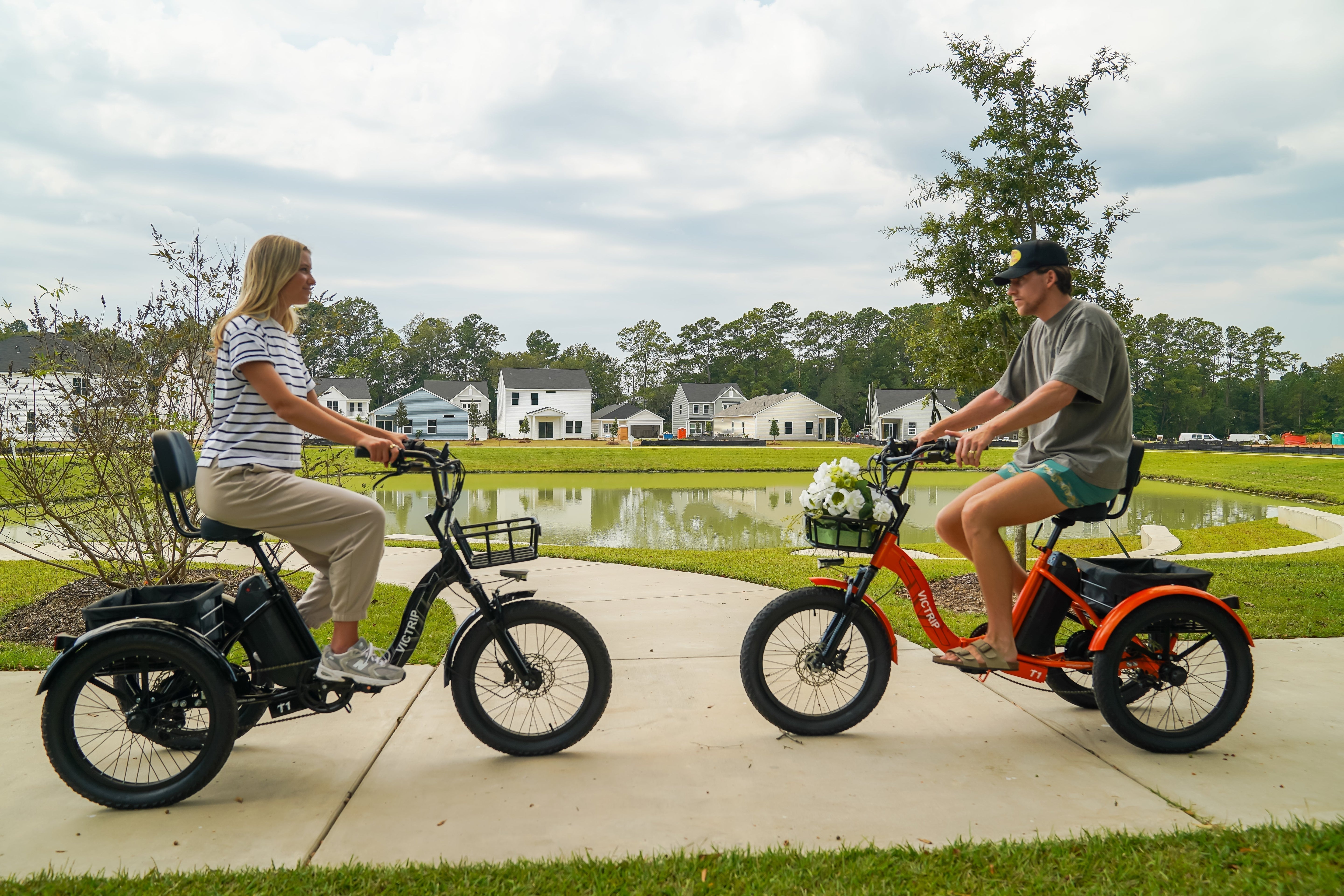
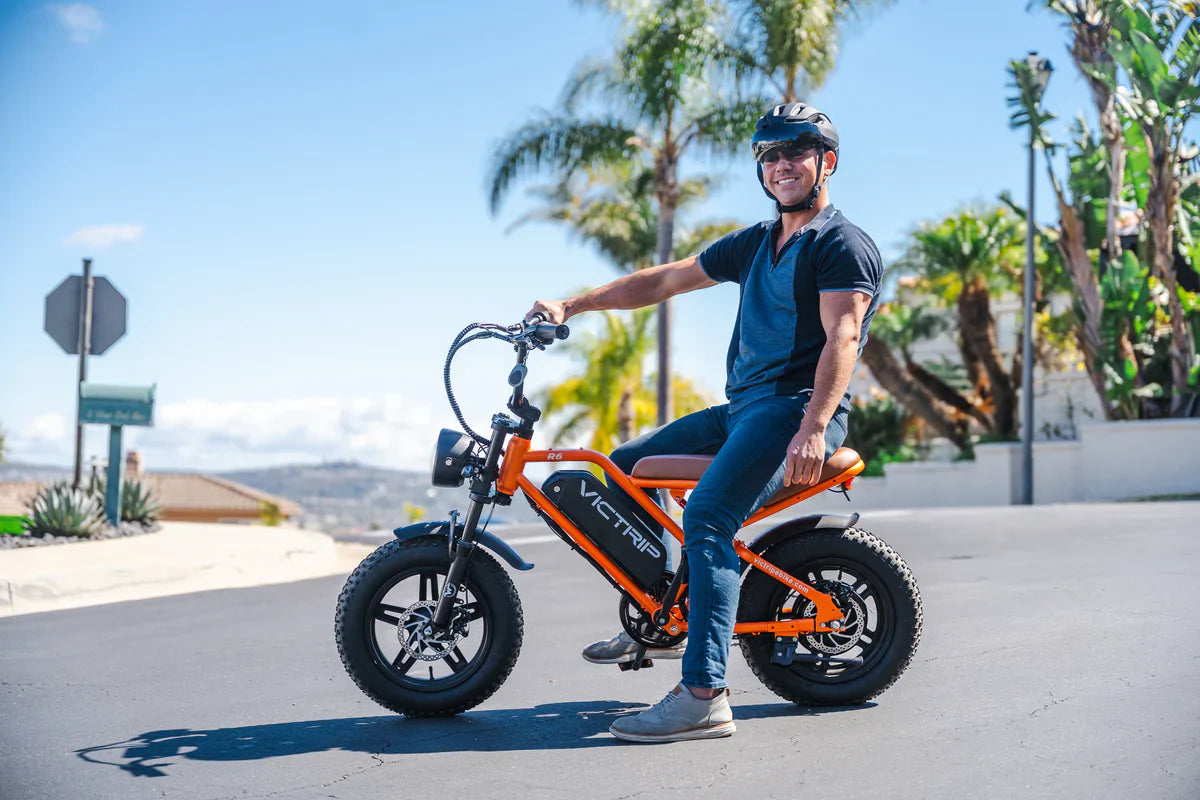
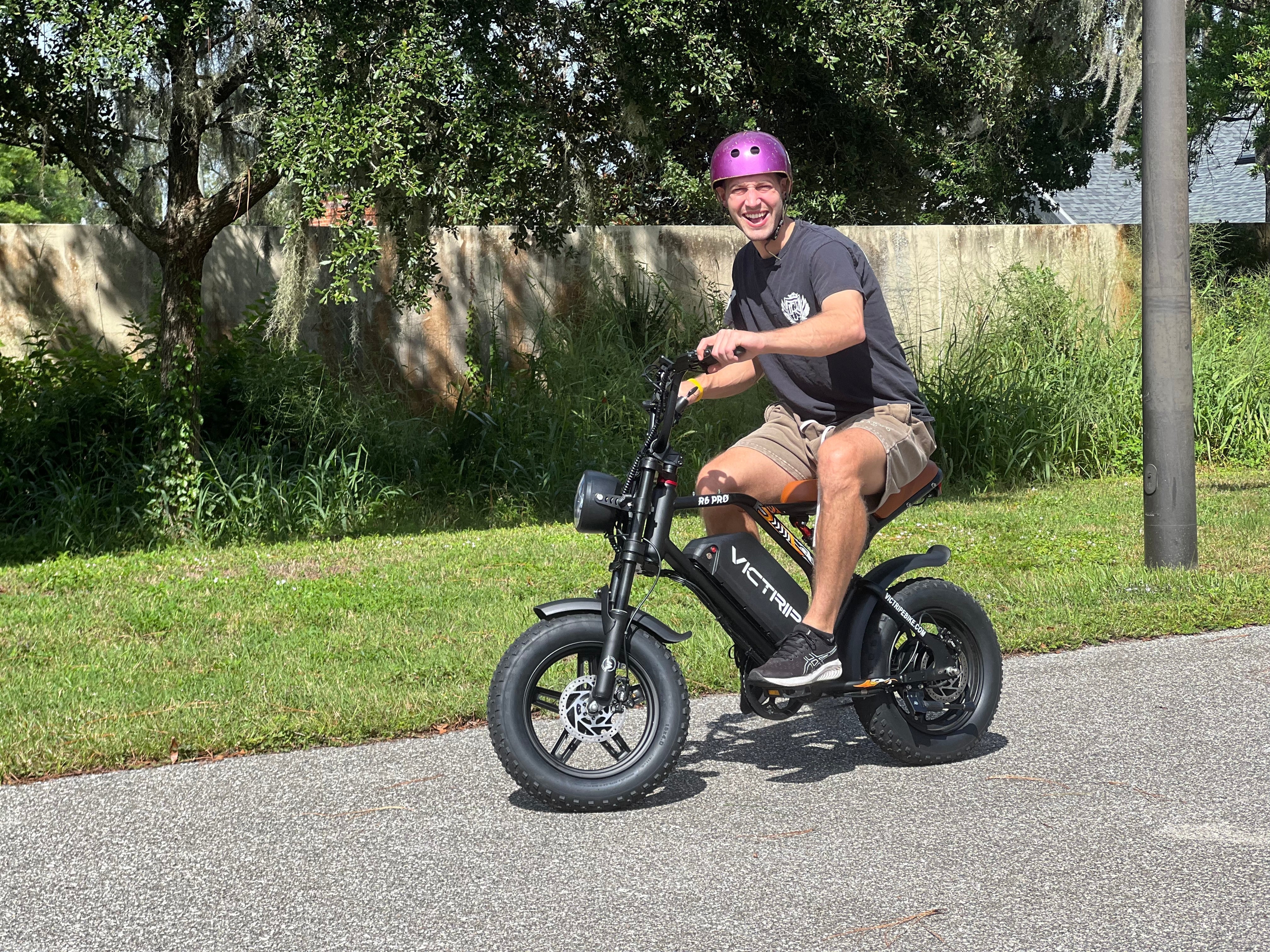
Share:
Gas vs Electric Off Road Bikes: Which One Should You Ride?
How Electric Trikes Empower People with Mobility Issues